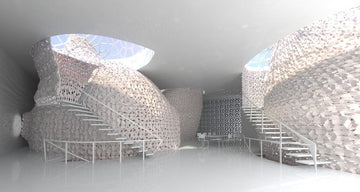The preservation and restoration of art treasures are paramount in ensuring that the world's cultural heritage endures for future generations. In this pursuit, 3D printing technology has emerged as a groundbreaking tool, offering innovative solutions for art conservation and restoration. Through the precise capture of digital replicas and the meticulous recreation of missing elements, 3D scanning and printing have revolutionized the field of art restoration. In this article, we explore the fascinating ways in which 3D printing is preserving masterpieces and advancing the art of restoration.
1. Digital Replication and Documentation:
3D scanning technology captures intricate details of artworks with remarkable accuracy. Artifacts can be scanned from various angles, producing high-resolution digital replicas that serve as comprehensive documentation. These digital records become invaluable references for conservation efforts, enabling experts to analyze and study artworks without physical handling.
2. Repairing Damaged Artworks:
In cases where artworks have suffered damage or deterioration, 3D printing offers a means of precision repair. Using the scanned data, restorers can recreate missing or damaged components, seamlessly integrating them into the original piece. Whether it's a chipped sculpture, a cracked artifact, or a fragmented painting frame, 3D printing enables the restoration of artworks to their original splendor.
3. Recreating Fragile or Lost Elements:
Certain artworks may have delicate or intricate elements that are susceptible to damage over time. 3D printing allows restorers to recreate these fragile components using durable materials. For instance, missing decorative elements, ornate moldings, or intricate filigree can be faithfully reproduced through 3D printing, ensuring the integrity of the artwork is preserved.
4. Preserving Original Artistic Intent:
Art restoration aims to honor the original intent of the artist. 3D scanning and printing play a crucial role in achieving this goal by reproducing details and textures in exacting detail. This meticulous recreation ensures that the artist's vision is faithfully captured, allowing audiences to experience the artwork as it was intended.
5. Enhancing Accessibility and Education:
3D printing facilitates greater accessibility to artworks, especially for those who may not have the opportunity to view them in person. Replicas created through 3D printing can be exhibited, studied, and even touched by visitors, enhancing educational experiences and fostering a deeper connection with art and history.
6. Minimal Intervention Approach:
The use of 3D printing aligns with the principles of minimal intervention in art restoration. Rather than altering original materials, restorers can create replacement components that seamlessly integrate with the existing artwork. This approach maintains the historical and artistic authenticity of the piece while addressing areas of deterioration.
7. Future-Proofing Cultural Heritage:
3D printing technology future-proofs cultural heritage by preserving it in a digital form. In cases where artworks are vulnerable to environmental factors or deterioration, 3D scanning creates a digital archive that can serve as a reference for future restoration efforts or even allow for the recreation of artworks if they are lost or damaged beyond repair.
The marriage of 3D scanning and printing with art restoration is a testament to the harmonious coexistence of tradition and technology. By leveraging these innovative tools, art conservators and restorers are breathing new life into masterpieces, preserving their beauty and cultural significance for generations to come. As 3D printing continues to evolve, it promises to further enhance the capabilities of art restoration, ensuring that the stories and visions captured within these works of art endure throughout the passage of time.






